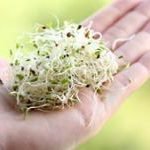Calendula is a native Mediterranean plant that belongs to the daisy plant family Asteraceae. Natural healers have found calendula ointment uses for many of years.
Flowers often have herbal uses beyond being beautiful to look at. This is certainly the case when it comes to calendula. Calendula is most commonly referred to as pot marigold; however, this is not the same annual marigold frequently found in gardens. Calendula is a native Mediterranean plant with gorgeous yellow/orange flowers that belongs to the daisy plant family Asteraceae.
History of Calendula
Natural healers have found uses for calendula oil for hundreds of years. In fact, ancient Egyptians believed calendula to have rejuvenating properties. Hindus used it to adorn statues of gods in their temples, in addition to using it to color their food, fabrics, and cosmetics. In the Soviet Union, it was used as a treatment for smallpox and measles. They grew so much of it that it became known in the region as “Russian penicillin.” More on that later.
Calendula for Natural Skin Care Relief
Today, the herb has a vast number of uses. Most commonly, the oil is used for skin care issues, as it is known to help heal, soothe and soften skin. It is considered helpful in reducing inflammation and promoting wound healing. Calendula herbal treatments are typically applied topically to help burns, cuts, and bruises heal faster. It is also believed to help fight any minor infections that may occur from these types of injuries. It is often used by herbalists for first-degree burns and sunburns as well. Compresses have also been used to help treat varicose veins.
Calendula as an Antioxidant
When you take a closer look at calendula, you probably wouldn’t be surprised at its health benefits. For instance, the combination of vitamins C and E found in calendula work together as a healing agent when applied topically to the skin. In addition, calendula has over 20 phytochemicals, natural antioxidant substances thought to prevent disease in humans and is therefore considered a potent antioxidant.
Calendula for Natural Pain Relief
Calendula oil has actually been used by natural healers for hundreds of years for its reputed ability to relieve pain, reduce inflammation, and as an antispasmodic. These are some of the reasons you’ll find it as an ingredient in Jon Barron’s Essential Relief formula.
Calendula as an Anti-Inflammatory and More…
According to Memorial Sloan-Kettering Cancer Center in New York, preliminary studies suggest that calendula does indeed work as an anti-inflammatory but also has anti-viral, anti-parasitic, anti-HIV, anti-tumor, and antibacterial properties. And a 2012 study published in Complimentary Therapies in Clinical Practice found that calendula extracts showed excellent antifungal activity against tested strains of fungi when compared with Fluconazole, the prescription drug of choice for treating a variety of yeast and fungal infections.
Calendula, More than Just a Natural Skin Healer
While this herb may be a “do-it-all” skin healer, it is so much more! In fact, it has been used for all types of issues including:
- conjunctivitis
- blepharitis
- eczema
- gastritis
- minor burns including sunburns
- warts
- minor injuries such as sprains and wounds
- cramps
- coughs
- snake bites
- acne
- ulcers
- bed sores
- varicose veins
- rashes
- skin ulcerations
- ear infections
More Natural Health Benefits of Calendula
Internally, calendula has other health benefits as well. It has been used to treat gastrointestinal disorders such as upset stomachs and ulcers. In the book “Prescription for Nutritional Healing,” Phyllis Balch mentions that it is also useful for treating low-grade fevers, toothaches, and menstrual cramps.
How to Take Calendula
You can find calendula in many forms. The fresh or dried petals can be found in liquid form, both as a calendula tincture extract and as an essential calendula oil, as well as in ointment and cream forms. While considered mostly side-effect free, people with sensitivities to the aster family of plants may have an allergic reaction. Also, it should not be used by pregnant or lactating women or women trying to conceive, as some studies indicate it may impact the uterus.
Learn more about calendula oil and its use in a topical pain relief oil.








TO PURCHASE
Thanks for your info on concerning herbs, If I may ask how can one get some of these products? Or the means of having some of them.
Regards,
Nsonguyo
We do not sell products on
We do not sell products on this site, merely provide natural health information. However, we recommend a few products on our Products page, link at the top of the site, and list the companies that sell them. We also link to a product in this article.